BASIC PROJECT DATA
Project ID: PA1A087
NEED AND ADDED VALUE FOR THE DANUBE REGION STRATEGY
Europe’s freight transport system has much room for improvement. Congestion, capacity problems and delays affect mobility and economic competitiveness and are detrimental to the environment and quality of life.
The EU has committed itself to pursue the goal of shifting transport to less energy-intensive, cleaner and safer transport modes. Inland waterway transport is an obvious choice to play a more prominent role in reaching these targets.
Given that inland navigation is often a cross-border transport mode, action at both national and Community level is required. This is why the European Commission developed the action programme NAIADES, which aims at promoting IWT in Europe through a broad range of activities. PLATINA II was the follow-up project of PLATINA in order to continue the coordination platform to implement the action programme.
The activities of PLATINA II aimed at the whole European Union, as IWT is relevant for most of the countries. For the Danube region though, they are of special relevance, as the Danube is not only among the major inland waterways of Europe but also the most international waterway in the world. It exhibits pronounced disparities concerning navigation and socio-economic conditions alongside its course. Due to this, the broad set of measures applied by PLATINA II, addressing issues concerning markets & awareness, innovation & fleet, jobs & skills and infrastructure, are expected to have profound impact on the Danube region.
PLATINA II represented an essential framework for the Danube Region Strategy, accounting for the pan-European perspective and setting the topical parameters for strategy building and action implementation of the EUSDR.
OBJECTIVE(S) OF THE PROJECT
PLATINA II was a coordination and support action aimed at the promotion of inland waterway transport (IWT). The main objective of PLATINA II was to support the Commission, Member States and third countries in the implementation of the NAIADES I and II action programmes by bringing together all relevant actors concerned in a broad knowledge network, thereby maximising its contribution to the European policy goals mentioned above.
This was achieved by:
Providing technical and organisational support for targeted policy actions: Together with the European Commission, PLATINA II identified the necessary policy actions, brought together the required stakeholders (working groups, expert meetings) and developed the necessary knowledge and tools in order to contribute to the achievement of the objectives in all five NAIADES action areas.
Building on strong interrelations with existing expert groups, projects and initiatives: The European added value of PLATINA II is to create synergies at the European level through an increased exchange of know-how, while at the same time respecting and supporting existing decision-making structures. Through the multi-disciplinary composition of its working programme and consortium, PLATINA II will be a flexible platform that can effectively react to emerging policy needs in the field of inland waterway transport. PLATINA II strongly buildt on the results of the PLATINA project (2008-2012).
CONDUCTED PROJECT ACTIVITIES
WP1 (MARKETS & AWARENESS) identified and tried to attract new markets for inland waterway transport and stimulated multimodal supply chain integration as well as synergistic actions between operators.
WP2 (INNOVATION & FLEET) defined measures to stimulate innovation take-up and greening of the fleet, undertook technology forecasts, enhanced the knowledge basis on external cost performance and consolidated research and innovation needs.
WP3 (JOBS & SKILLS) facilitated the development of standards for simulators and electronic service record books and raise the impact of inland waterway transport in logistics education and training by improving learning material.
WP4 (INFRASTRUCTURE) identified ways to close the data gaps on IWT infrastructure in Europe, provided tools for the integration of IWT into multimodal European corridors, monitored and supported the implementation of River Information Services and identified future logistics applications as well as facilitated the exchange of good practices on efficient and effective inland waterway maintenance.
WP5 (TECHNICAL SECRETARIAT) was the focal point for project management, dissemination and networking of external stakeholders through a structured NAIADES dialogue.
TRANSBOUNDARY IMPACT
PLATINA II addressed all European countries with inland waterway transport, as many of the project measures and results are relevant for all of Europe (e.g. identifying research needs). Furthermore, a corridor approach was applied, e.g. when preparing decision support tools for logistics.
The consortium itself consisted of players from Austria, France, The Netherlands, Romania, Croatia, Belgium and Germany. Furthermore, the PLATINA II consortium has received support from key Member States, candidate countries and associated countries: Austria, Belgium, Bulgaria, Czech Republic, Croatia, France, Germany, the Netherlands, Romania, Slovak Republic, Poland, Serbia Participation in Steering Committee meetings was however not restricted to these countries. Other Member States were invited to Steering Committee meetings during the project and in coordination with the European Commission.
As a consequence, the focus of the measures lay on these countries.
PROJECT BENEFICIARIES / TARGET GROUPS
PLATINA II supported the European Commission, EU Member States and third countries in the implementation of the NAIADES I + II action programmes. It aimed at bringing together the required stakeholders (working groups, expert meetings) and developed the necessary knowledge and tools.
Besides the comprising consortium, PLATINA aimed to also integrate a large number of further relevant players. The following institutions participated actively:
- Waterway operators and administrations
- Representatives of the IWT industry, fleet operators and ports
- Promotion and development organisations
- Existing and potential customers
- Inland navigation educational institutions
- Experienced consultants and research institutes
- International river commissions (Danube Commission, International Sava River Basin Commission and Mosel Commission)
- Representatives from the road and rail sector
PLATINA II facilitated the exchange of know-how and experience through a structured process of communication (NAIADES dialogue). Firm links between representatives of the EU, national policy makers, the industry, researchers and key organisations of the sector as well as customers were established. Eastern European partners were integrated in order to reflect the pan-European character of the NAIADES action programme.
The project results are therefore beneficial to a broad set of players, from government institutions and interest groups to economic stakeholders and users of the waterway all over Europe.
STATUS AND TIMEFRAME
Start date: 01.09.2013
End date: 29.02.2016
The project is already concluded.
FINANCING
Total budget: 1,999,995 EUR
EU funds: 1,999,995 EUR were funded by FP7- Seventh Frameworkprogramme for Research and Technological Development “TRANSPORT” 2007 – 2013 (Sub-programme area: SST-2012.2-.2 Towards an implementation of the NAIADES action areas; Reference: 321498)
The amount from national and private funds is unknown.
PROJECT TEAM
Project leader: via donau – Österreichische Wassertraßen-Gesellschaft mbH / Austria
(website: www.viadonau.org)
Address: Donau-City-Straße 1; 1220 Vienna / Austria
Project partner(s):
- Voies Navigables de France – VNF / France
- Bundesverband der Deutschen Binnenschiffahrt e.V. – BDB / Germany
- Promotie Binnenvaart Vlaanderen VZW – PBV / Belgium
- Federation Europeenne de Promotion des Transports Par, Vioe Navigable – Belgium
- Ministerie van Infrastructuur en Milieu – The Netherlands
- PANTEIA BV – The Netherlands
- Entwicklungszentrum für Schiffstechnik und Transportsysteme e.V. – Germany
- Centar za razvoj unutarnje plovidbe d.o.o. – CRUP / Croatia
- STICHTING STC-GROUP – The Netherlands
- Centrul Roman Pentru Pregatirea si Perfectionarea Personalului din Transporturi Navale – Romania
- Stichting Dunamare Onderwijsgroep – The Netherlands
PROJECT ENVIRONMENT
PROJECT CROSS – REFERENCE
especially PLATINA (PA1A004) and ProDuna (PA1A016), IRIS EUROPE III, CO-WANDA, NEWADA II, HINT, INWAPO, NEWS
STRATEGIC REFERENCE
- UNECE’s 2nd revised “Blue Book” (2012)
- Lisbon Strategy
- Gothenburg Council
- European White Paper for Transport 2011
- NAIADES I & II Action Programme
- National IWT Action Plans and strategies
RELEVANT LEGISLATION
- Directive 2006/87/EC laying down technical requirements for inland waterway vessels
- Directive 2008/68/EC on transport of dangerous goods
- Directive 2004/26/EC relates to measures against the emission of gaseous and particulate pollutants from internal combustion engines installed in non-road mobile machinery (NRMM)
- Directive 2009/30/EC introduced a mechanism to monitor and reduce greenhouse gas emissions.
- Directive 96/50/EC on Boatmaster certificates
- Directive 2033/88/EC on working times
- Regulation (EC) No 1365/2006 on statistics of goods transport
- Regulation (EC) No 1304/2007 of the European Parliament and of the Council with respect to the establishment of NST 2007 as unique classification for transported goods and is implemented by Commission Regulation (EC) No 425/2007
- Regulation 7998/2006/2008 about de minimis rules for IWT
- TEN-T- guidelines
- State aid guidelines
EUSDR EMBEDDING
EUSDR COMPLIANCE
OTHER RELEVANT ISSUES
One crucial aspect of the PLATINA II project was its focus on broad cooperation of various players from different backgrounds all over Europe. This was in fact its USP as well as one of its main critical issues: in the countries of Europe, different approaches exist, the relevance given to the issue varies and different frameworks result in different capacities to act. Furthermore, players from policy, research as well as interest organisations and economy have to be reconciled. That meant that in PLATINA II, targeted work with regard to contents and communication had to be done.
The broad topical agenda of PLATINA made it furthermore dependant of a large number of external developments, e.g. innovations in ICT, fuel prices, political landscapes or public opinion. It was necessary to constantly monitor the different project areas and develop suitable strategies for action.
META DATA
Data provided by: Gudrun Maierbrugger (via donau – Österreichische Wasserstraßen-Gesellschaft mbH, Austria) – 26.06.2013
Download pdf.




